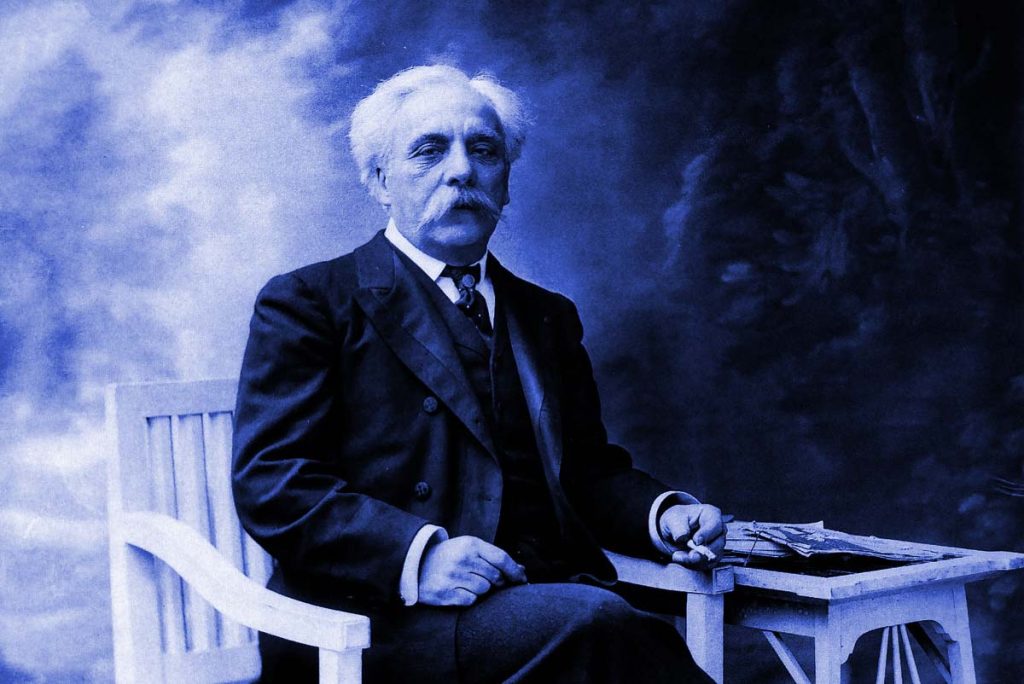The Quiet Revolutionary of the Piano – Fauré’s Complete Piano Works Now on Piano Street
In the pantheon of French music, Gabriel Fauré (1845–1924) often seems a paradox—an innovator cloaked in restraint, a Romantic by birth who shaped the contours of modern French music with quiet insistence. Piano Street now provides sheet music for his complete piano works: a body of music that resists spectacle, even as it brims with invention and brilliance.

Fauré’s piano music occupies a curious position in the repertoire: admired by connoisseurs, respected by pianists, yet remaining relatively underappreciated. He also occupies an awkward historical space. Born in 1845, he arrived on the scene after the French Romantic movement had already been formed by famous figures like Berlioz, Gounod, and Saint-Saëns. On the other hand, he can’t be grouped with Impressionists like Debussy, who was seventeen years his junior.
A revolutionary who never sought to dazzle
It is tempting to label him a quiet revolutionary; his fluid approach to harmony and refusal of dramatic rhetoric influenced generations of French composers. But unlike Debussy or Ravel, Fauré never courted the avant-garde or sought to dazzle. His works rarely offer the kind of immediate emotional payoff or virtuosic display that captivates broad audiences. His harmonic language, while innovative, is often quiet in its rebellion, relying on modal shifts, fluid voice leading, and unresolved tensions rather than overt drama.
For all its restraint and refinement, Fauré’s music charts a remarkable artistic evolution. A glance at his work list – Nocturnes, Barcarolles, Impromptus, Waltzes – suggests Chopin as an important starting point. But Fauré was far from a copycat and was able to renew these genres in a highly personal way. Nowhere is this more apparent than in the collections of Nocturnes and Barcarolles.
The Nocturnes & Barcarolles
Fauré’s 13 Nocturnes were composed over a span of 45 years, from his early thirties until a few years before his death at the age of 79. The early ones draw from the elegance of Chopin, as well as from the lyricism of Mendelssohn. Yet even in these youthful pieces, Fauré’s own voice is unmistakable. As his career progressed, Fauré’s language darkened and deepened. The later Nocturnes speak in an abstract, pared-down idiom that can verge on the hermetic. In this late style, developed in relative isolation from musical trends around him, harmonies become more ambiguous, phrases less songful, and time seems to slow, almost to the point of stasis.
The Barcarolle, modelled on the folk songs sung by Venetian gondoliers, proved to be another inspirational genre for Fauré, and here we can trace a similar evolution. His collection of 13 Barcarolles, composed throughout his career, is certainly one of the most impressive in the history of classical music; each one of these pieces seems to reinvent the genre.
Explore Fauré’s unique musical universe
On our Fauré page, you can now download all the Nocturnes and Barcarolles as well as everything else that he composed for the piano, and listen to handpicked recordings in the AST. With the Fauré Piano Street sheet music library now complete, it’s easier than ever to explore the exquisite landscape of subtle emotions, harmonic daring, and poetic intimacy that is Fauré´s piano music.
Related reading:
Lucas Debargue – A Matter of Life or Death (Interview about his recording of Fauré’s complete piano music)
Comments